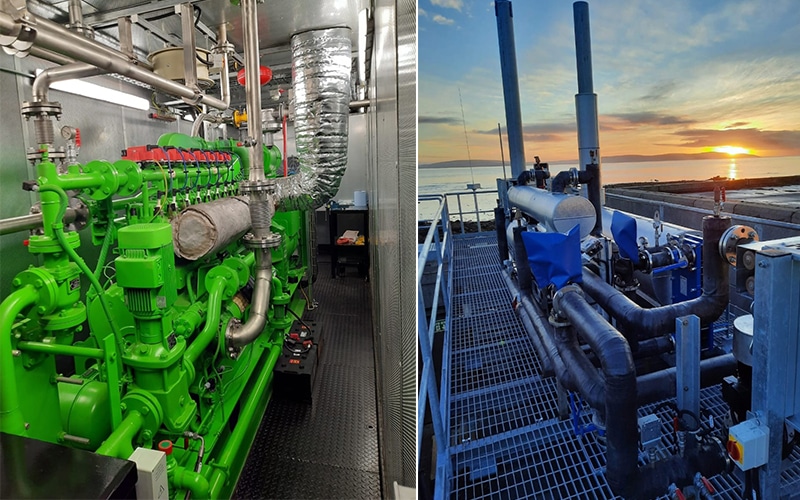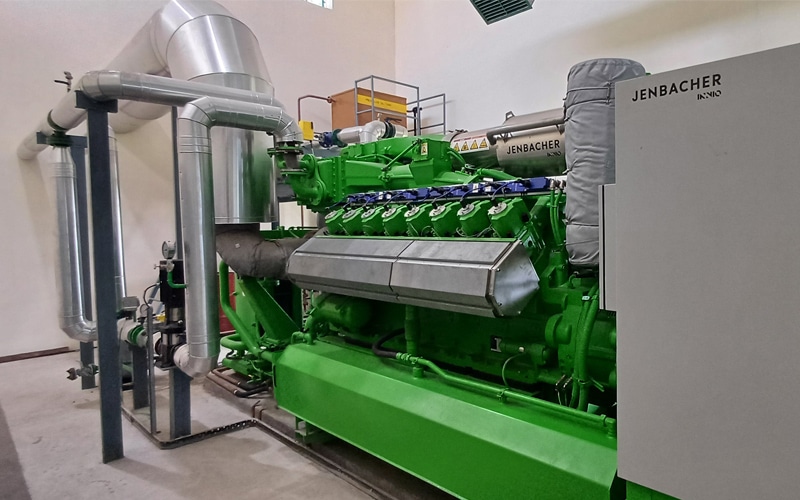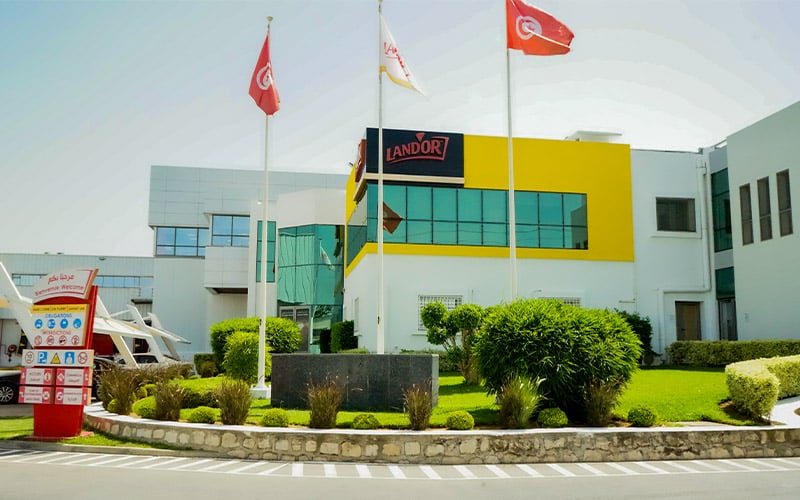
Trigeneration/CCHP
Trigeneration or combined cooling, heat and power (CCHP), is the process by which some of the heat produced by a cogeneration plant is used to generate chilled water for air conditioning or refrigeration. An absorption chiller is linked to the combined heat and power (CHP) to provide this functionality. Quadgeneration takes this process one step further with the addition of systems to purify carbon dioxide from the engine exhaust. Combined cooling and power (CCP) is where electricity and cooling are utilised alone.




Combined Cooling, Heat and Power Solutions from Clarke Energy
Clarke Energy’s CCHP solutions have been successfully deployed in a wide range of environments including; Universities, Hospitals, Commercial Buildings and Data Centres.
Benefits of Trigeneration
There are a number of benefits to trigeneration including:
• Onsite, high efficiency production of electricity and heat
• Reduced fuel and energy costs
• Lower electrical usage during peak summer demand
• Engine heat can be used to produce steam of hot water for onsite use
• Significant reductions in greenhouse gas emissions
• No harmful chemical pollutants since water is used as the refrigerant
• Beneficial for improving building’s energy efficiency ratings such as Green Star and NABERS in Australia
Clarke Energy Global CHP Experience
>7GW
Power installed globally
>1.4GW
CHP installed globally
>500
Service engineers on the ground
Rapid ROI
Fast pay-back of CHP installations
Arrange a FREE feasibility study
Contact us for a free, no-obligation feasibility study of your businesses energy demand.
CCHP Applications
A variety of different fuels can be used to facilitate cogeneration. In gas engine applications CCHP equipment is typically applied to:
Trigeneration systems supply energy in three forms: electricity; heat and chilled water.
Absorption chillers provide an economical and environmental alternative to conventional refrigeration. Combining efficiency, low emission power generation equipment with absorption chillers allows for maximum total fuel efficiency, elimination of harmful refrigerants and reduced overall air emissions. There are a number of different configurations of CHP units where refrigeration can be derived. These include:
Absorption Chillers
- Operation using hot water
- Operation using steam
- Direct heat via combustion
Compression-type refrigeration machines
- Direct drive power
- Electrical drive power
Combining a CHP or cogeneration plant with an absorption refrigeration system allows utilisation of seasonal excess heat for cooling. The hot water from the cooling circuit of the plant serves as drive energy for the absorption chiller. The hot exhaust gas from the gas engine can also be used as an energy source for steam generation, which can then be utilised as an energy source for a highly efficient, double-effect steam chiller. Up to 80% of the thermal output of the cogeneration plant is thereby converted to chilled water. In this way, the year-round capacity utilisation and the overall efficiency of the cogeneration plant can be increased significantly.
Advantages Versus Conventional Refrigeration
Absorption based refrigeration technology offers the most established and economic solution for reduced emission, air conditioning systems.
- Operated with heat, utilising relatively inexpensive ‘excess energy’
- Production of electricity that can be fed into the power grid or used to cover the plant’s electricity requirements
- During cold seasons, the heat can be utilised to cover heat requirements
- Absorption chillers have no moving parts, there for there is no wear and maintenance costs are low.
- Absorption system has noiseless operation
- Low operating costs and lifecycle costs
- Using water as a refrigerant replaces the use of ozone damaging substances.
Competence
Across the world, there is a new emphasis on projects that combine climate protection and economical primary power generation. Absorption chiller technology represents an optimal solution for a year-round efficient source of cooling and heat, especially when used in conjunction with a gas engine cogeneration plant.
More than 500 systems with Jenbacher gas engines in combination with absorption chillers have been delivered worldwide.
Key Figures
- Approximately 150-170 kW of cold output is required per 1,000m2of office space
- The term tonnes of refrigeration (TR) is generally used as the unit of cold energy 1 TR (metric) = 3.86 kWh, 1 TR (US) 3.52kWh
- The term coefficient of performance (COP) is used for referring to the efficiency of an absorption chiller. For a hot water chiller, the COP lies between 0.6 – 0.8 and for a double-effect steam chiller between 1.2 – 1.3
- Cold water temperatures down to 4.5°C can be achieved with lithium bromide salt
- Temperatures down to -60°C can be achieved with ammonia
Case Studies
Biogas CHP Powering Mutton Island Wastewater Treatment Plant in Ireland
Clarke Energy commissioned a combined heat and power (CHP) system designed to enhance energy efficiency and sustainability at the site.
Sewage Gas-to-Power: Sustainable Energy Solution for South India’s Wastewater Plant
Eco Protection Engineers selected Clarke Energy as the EPC contractor to offer a turnkey solution for the sewage gas to energy power project.
Trigeneration Transforms Cheese Manufacturing Efficiency in Tunisia
Cheese factory powered by a trigeneration plant, designed, installed and maintained by Clarke Energy Tunisia
Interested in installing a CCHP for your business?
Speak to your local Clarke Energy office to discuss the next steps to arrange a feasibility study of your energy demand.









